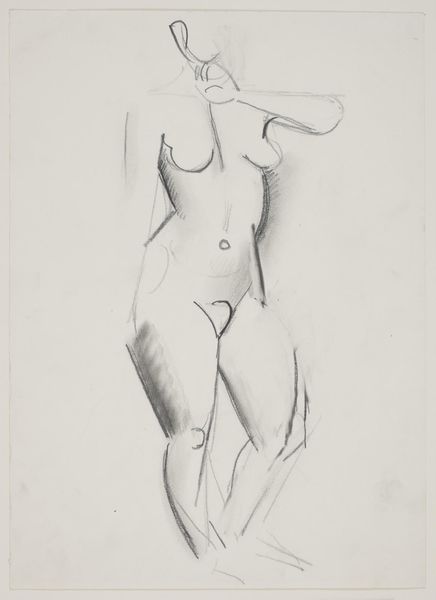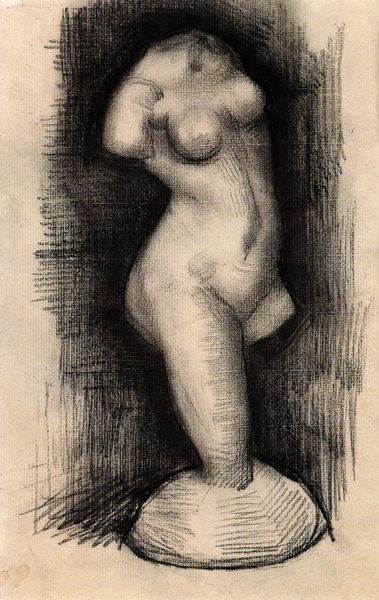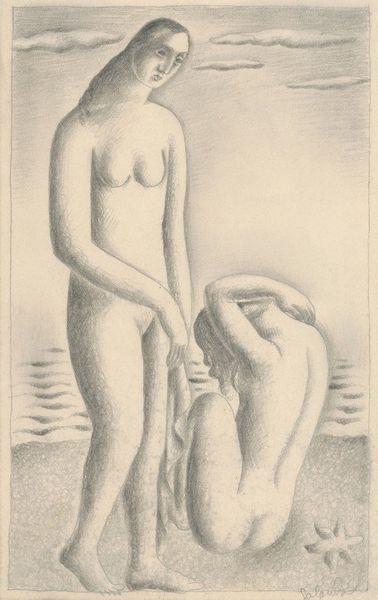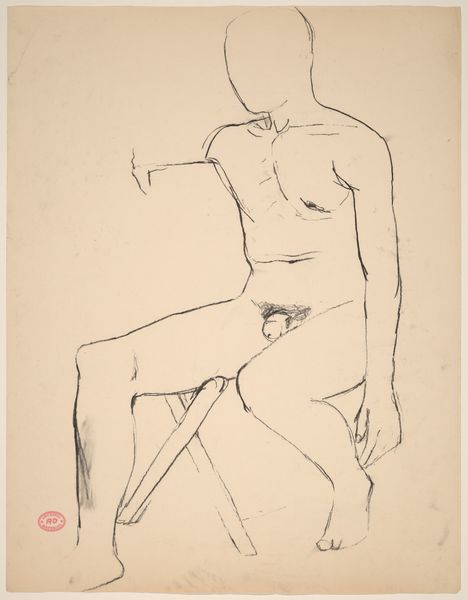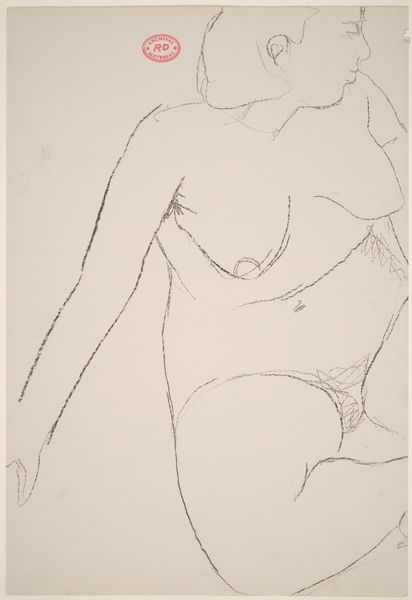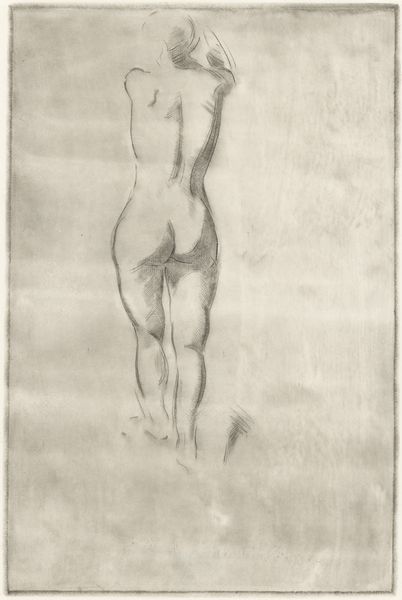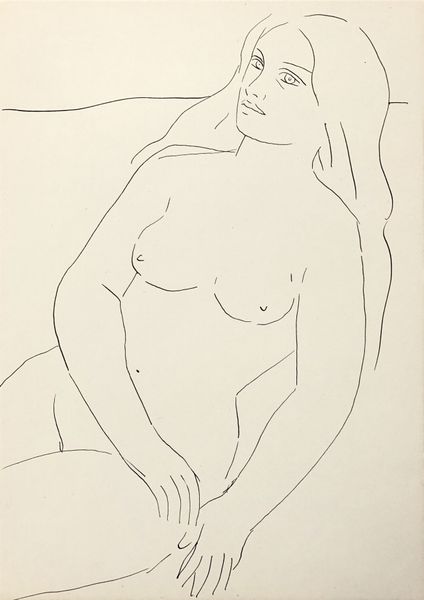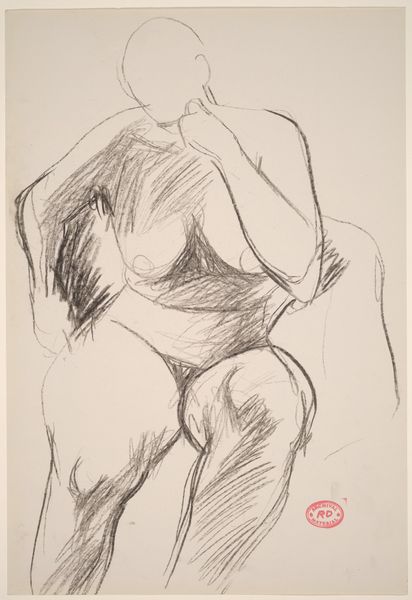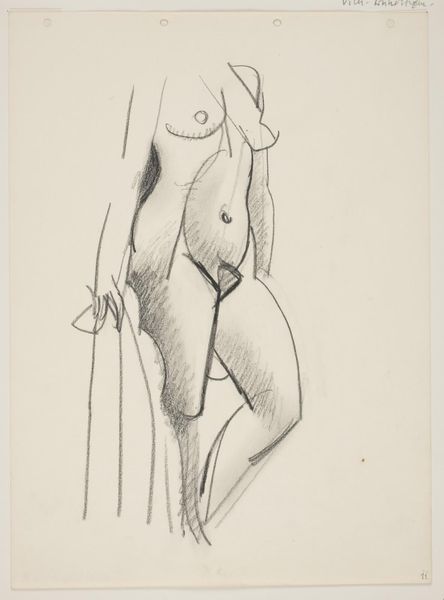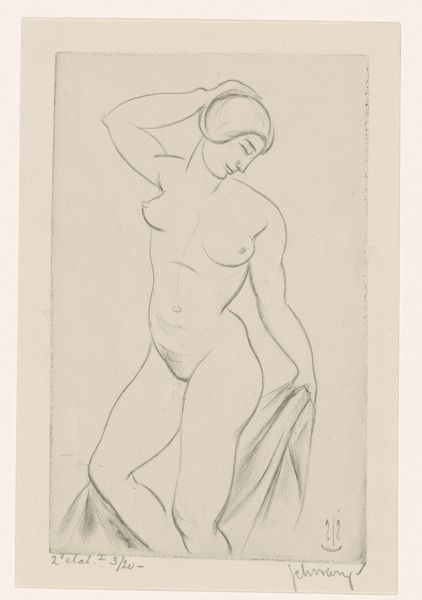
drawing, pencil
#
pencil drawn
#
drawing
#
facial expression drawing
#
pencil sketch
#
figuration
#
pencil drawing
#
pencil
#
portrait drawing
#
academic-art
#
nude
#
realism
Copyright: Public Domain: Artvee
Curator: Mikuláš Galanda's pencil drawing, titled "The Morning," completed in 1929, presents us with a fascinating interplay of light and form. My initial feeling is that it's both delicate and monumental. Editor: Yes, monumental is a good word. The figures have a certain weight, a groundedness. But it's also… unfinished. There's a starkness to the facelessness, the missing details. It's like witnessing the very act of creation, or maybe an ancient memory resurfacing. Curator: The lack of facial features, to me, enhances the universality of the piece. It moves beyond individual portraiture. These figures could be anyone, anytime, engaging in a timeless morning ritual. Galanda may be tapping into an archetypal feminine form – the act of grooming, the relationship to water. It suggests ritualistic purity, cleansing... perhaps even the mythical women bathing. Editor: That’s compelling. I also can’t help but consider the broader cultural context. In the interwar period, there was a real shift in how the female form was represented in art – more naturalistic, less idealized. Was Galanda trying to position himself within those emerging artistic currents? The relative softness and almost sketch-like qualities would be counter to other currents. Curator: I see it less as a conscious participation in that particular trend and more as an exploration of psychological space through the absence of specific markers. The academic realism coupled with the faceless anonymity presents a paradox, don't you think? What do you make of that subtle but pronounced angularity around the geometric forms supporting the figures? Editor: You are right that it stands apart. Considering it was completed in 1929, the angularity perhaps grounds it in interwar modernism a bit more than if everything was purely flowing. We need to consider too how this might reflect societal expectations for female behavior – a sort of imposed facelessness. Curator: Indeed, the very act of depriving these women of a face becomes a powerful statement in itself, open to a wide range of interpretations – social constraints or transcendental anonymity. Editor: Ultimately, it's a very human image, and that simplicity resonates despite, or perhaps because of, its ambiguities. Curator: A silent poem, rendered in graphite. Galanda leaves us pondering long after we turn away from it.
Comments
No comments
Be the first to comment and join the conversation on the ultimate creative platform.

